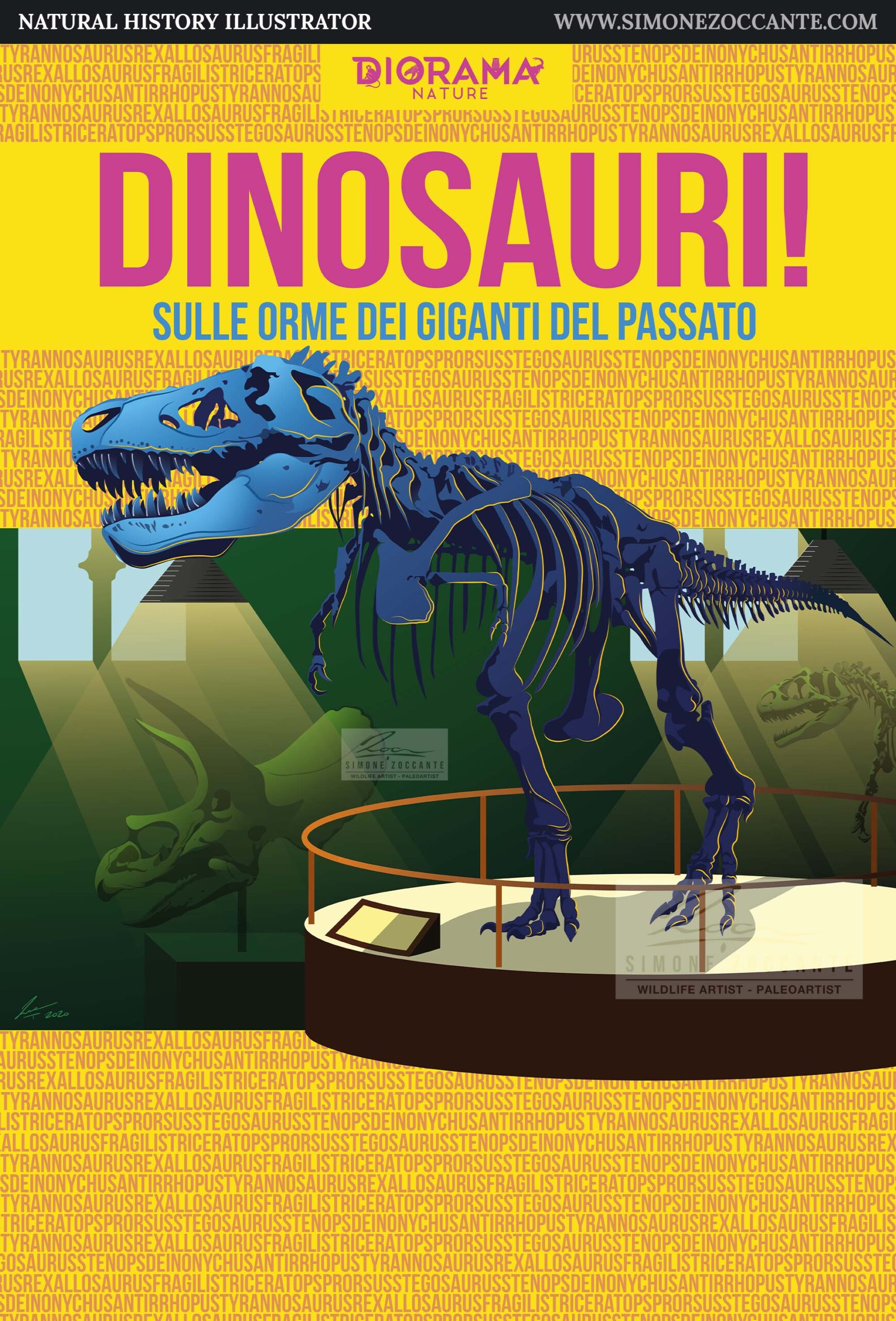
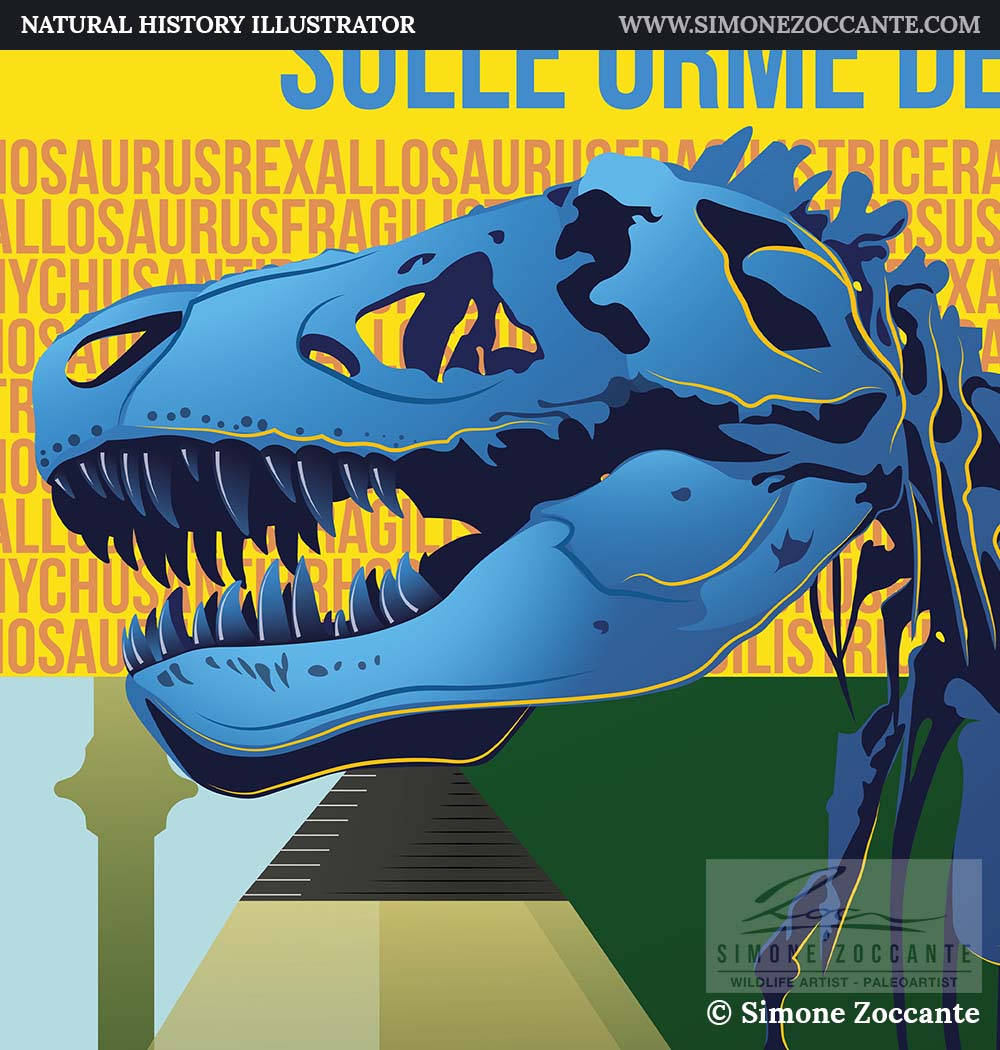
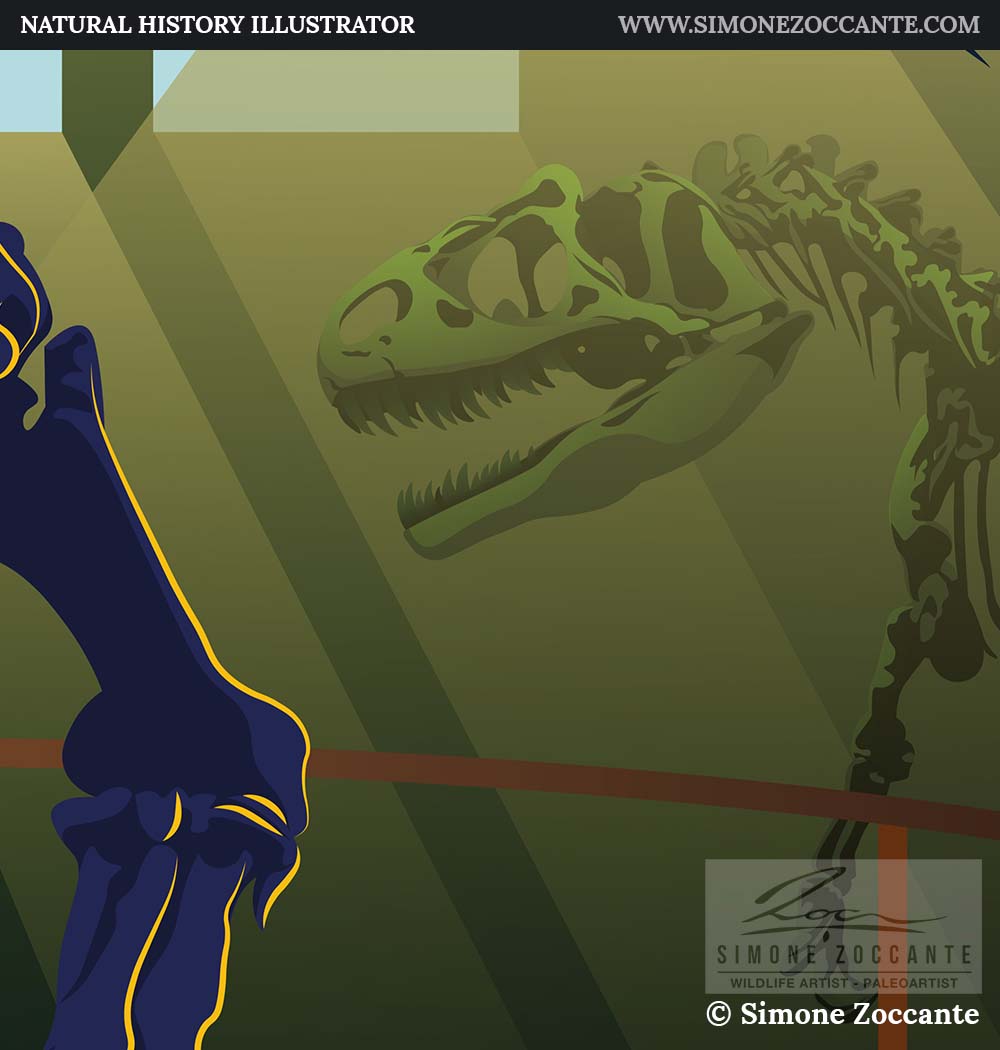
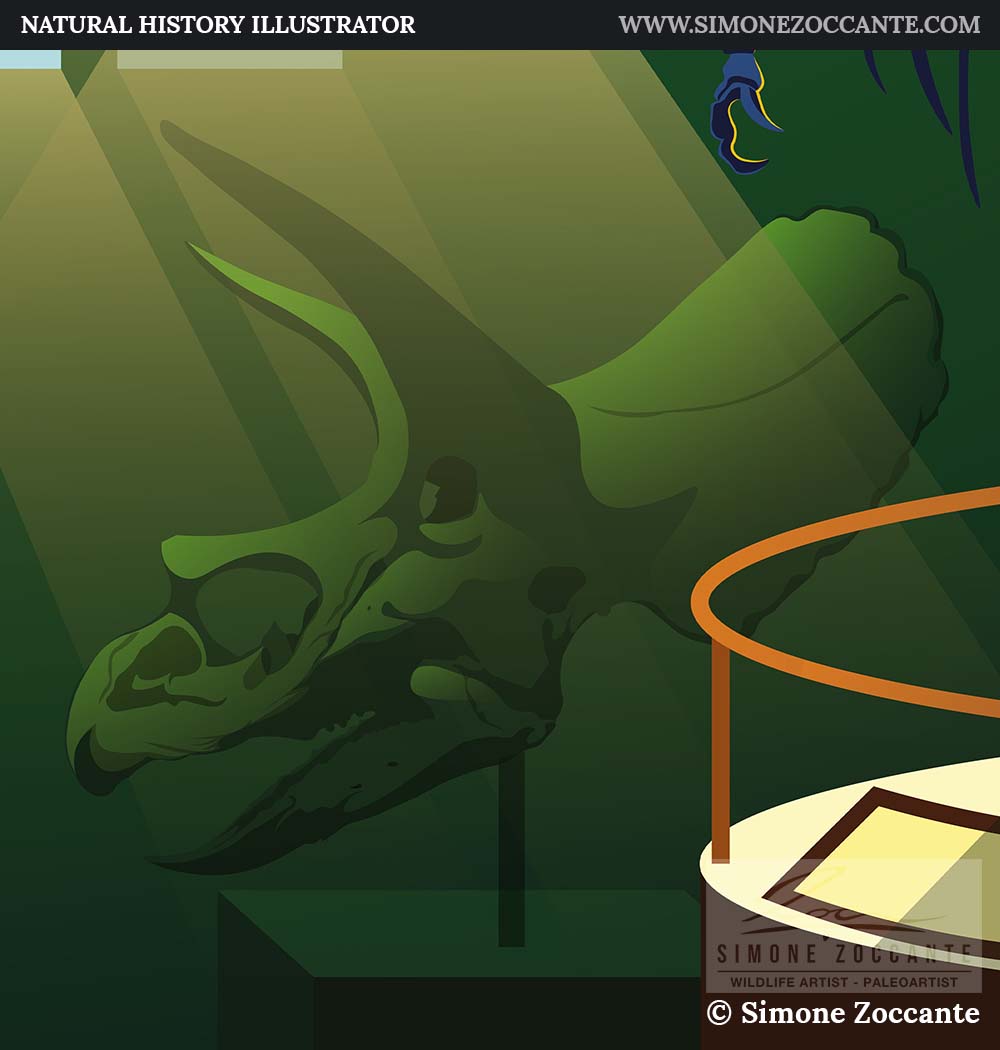
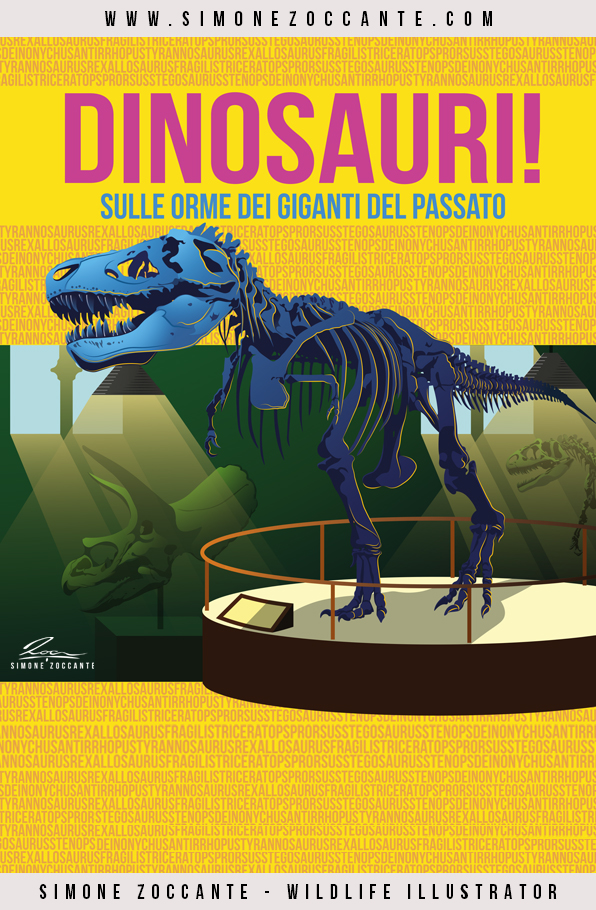
ARTIFICI NATURALI (NATURAL ARTIFACTS)
The artwork appears in the collection of Natural Artifacts
Included in Chapter 5
Dedicated paragraphs in the book
-
Evolving Reconstructions
-
The Mystery of Arms
-
Much More than Prehistoric Cows
Useful for understanding
Short history and evolution of paleoart and analysis of biases to consider when reconstructing an extinct species.
Estratto dal libro
It was in 1842 when the renowned British paleontologist and biologist Richard Owen coined the term “Dinosaur,” a combination of the Greek words “deinòs” (terrible) and “sàuros” (lizard). After 177 years of study, our concept of dinosaurs has changed significantly, and along with it, the potential appearance of these “terrible lizards.”
If the study of the past is a science in progress, and this is particularly true for paleontology, the graphic representation of that past is also an art subject to constant modifications and revisions.
To give a few examples: the first dinosaur to be described by modern paleontology was Megalosaurus, which, back in 1824, during the time of its discoverer William Buckland, was believed to be a sort of massive crocodile with a vaguely elephantine body. Some of these outdated reconstructions were exhibited in London’s Crystal Palace Park, astonishing passersby and visitors to the Great Exhibition, an event the city hosted in 1851.
Today, we know that Megalosaurus was a bipedal theropod, similar (in form only) to the more famous Allosaurus.
About fifty years later, the way dinosaurs lived in our imagination was heavily influenced by one of the greatest paleoartists in history: Charles R. Knight.
Mr. Knight was fortunate to live in one of the most prolific eras for paleontology and paleoart, during the “Bone Wars” period when paleontologists Othniel Charles Marsh and Edward Drinker Cope unearthed famous genera such as Allosaurus, Triceratops, Diplodocus, and Stegosaurus. It was also a time of new discoveries in the early 1900s when iconic species like Brachiosaurus altithorax, Tyrannosaurus rex, Ankylosaurus magniventris, Styracosaurus albertensis, and Edmontosaurus regalis were classified.
The field was, therefore, very fertile and rich in material for an artist. Charles Knight, with his reconstructions, influenced both scientific and popular culture until the 1960s.
If you are interested in using this image for your projects and works you can contact me and we can discuss about licensing.
All images © Simone Zoccante 2018-2023. Please do not reproduce without the expressed written consent of Simone Zoccante.
